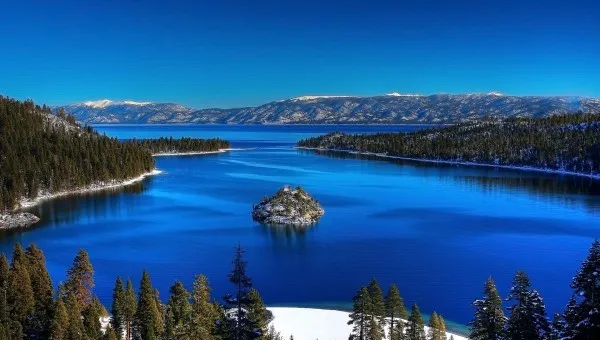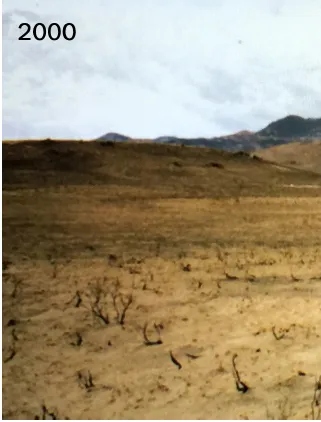While its beauty is undeniable year-round, understanding the lake tahoe nevada temperature is crucial for anyone planning a visit, especially if water activities are on your agenda. Unlike warmer coastal or lowland lakes, Tahoe’s deep, high-altitude waters maintain a brisk chill that defines the experience of swimming or engaging in water sports here. Nestled high in the Sierra Nevada mountains, straddling the border between California and Nevada, Lake Tahoe is a gem renowned for its breathtaking clarity and stunning alpine vistas.
For first-time visitors, the thought of plunging into Tahoe’s inviting blue can be exhilarating. However, the reality is that the water temperature remains surprisingly cold for most of the year. Even during the peak summer months, the surface temperature rarely climbs into truly ‘warm’ territory. This unique characteristic is a direct result of the lake’s impressive depth – reaching down to 1,645 feet (501 meters) – and its elevation of 6,225 feet (1,897 meters).
These factors combine to create a vast, deep reservoir that retains the cold temperatures from the winter snowmelt and the surrounding mountain environment. Planning your trip to this stunning region involves considering the climate, which significantly impacts the water temperature, as you explore other nevada places to visit.
Delving into Lake Tahoe’s Temperature Dynamics Across Seasons
The lake tahoe nevada temperature fluctuates throughout the year, though the changes are less dramatic in the deeper sections compared to the shallows. Understanding these seasonal variations helps set realistic expectations for water-based activities.
- Winter (December – February): During the colder months, the surface temperature drops significantly, often hovering just above freezing. While the lake doesn’t typically freeze over entirely due to its depth and constant circulation, the water is extremely cold. This season is dominated by snow sports in the surrounding mountains, making water activities in the lake impractical and unsafe without specialized gear.
- Spring (March – May): As the snow begins to melt, cold runoff flows into the lake, keeping temperatures very low. In May, for example, the average water temperature is typically between 43°F and 59°F (6°C to 15°C). While the air warms up, the water remains frigid. This is a beautiful time to visit for hiking and enjoying the scenery, but swimming is generally only for the most hardened individuals, often requiring a wetsuit.
- Summer (June – August): This is when the lake water is at its “warmest.” Surface temperatures generally range from 65°F to 75°F (18°C to 24°C) in the peak of July and August. However, this warmth is primarily confined to the very top layer and shallow areas near the shore. Venture just a few feet down or away from the beach, and you’ll quickly encounter the much colder core temperature, often below 50°F (10°C). These summer months are the most popular for water activities, but the lake tahoe nevada temperature still demands respect.
- Fall (September – November): Temperatures begin to cool down rapidly after summer. In September, you might still find surface temperatures ranging from 59°F to 72°F (15°C to 22°C) early in the month, but they drop steadily as autumn progresses. By November, the water is becoming very cold again, making swimming uncomfortable for most people. However, fall offers stunning foliage and fewer crowds, making it a wonderful time for scenic drives and lakeside strolls.
Understanding the seasonal shift in lake tahoe nevada temperature is key to planning your aquatic adventures, whether it’s a summer swim or a brisk paddle in the shoulder seasons.
 Lake Tahoe in Autumn
Lake Tahoe in Autumn
Swimming Opportunities and Cold Water Safety
Despite the relatively low lake tahoe nevada temperature, swimming is a popular activity during the warmer months, particularly from late June through August. The most comfortable areas for swimming are the designated beaches with shallow entry points, such as Sand Harbor and Zephyr Cove on the Nevada side, or Kings Beach on the California side. These areas allow the sun to warm the water more effectively near the shore.
Here are some tips for swimming in Lake Tahoe:
- Stay Near Shore: The shallow areas are warmest and safest. The temperature difference between the surface and deeper water can be significant.
- Acclimatize Slowly: Don’t jump straight into the cold water. Allow your body time to adjust gradually.
- Consider a Wetsuit: For longer swims or if you’re particularly sensitive to cold, a wetsuit can make a big difference in comfort and safety, even in summer.
- Be Aware of Cold Shock: Sudden immersion in cold water can trigger a gasp reflex, hyperventilation, and increased heart rate, which can be dangerous. This is why slow entry is important.
- Know Your Limits: Cold water fatigues the body faster. Don’t overexert yourself.
- Swim with a Buddy: It’s always safer to swim with someone else.
- Use a Bright Swim Cap and Tow Float: These increase your visibility to boaters.
While the lake tahoe nevada temperature might seem daunting, swimming in its crystal-clear waters is an incredibly refreshing experience on a warm day. It’s just essential to approach it with awareness and respect for the cold. Exploring the shores and waters of Lake Tahoe is just one of the many incredible places to visit in nevada.
Beyond Swimming: Activities Influenced by Lake Temperature
The lake tahoe nevada temperature influences more than just swimming. Other water activities are also impacted:
- Kayaking and Paddleboarding: These are popular activities from late spring through early fall. While you’re not fully submerged, falling in is a real possibility, so the water temperature is still a crucial consideration. Dress appropriately (layers, quick-dry clothing) and be prepared for a cold dip, especially in the shoulder seasons.
- Boating and Jet Skiing: Enjoyable throughout the warmer months. Again, safety is key. If you’re tubing, water skiing, or wakeboarding, expect frequent contact with the cold water.
- Fishing: Lake Tahoe is a renowned fishing destination year-round. Different species are more active in certain temperatures, so understanding the lake tahoe nevada temperature helps anglers target species like Lake Trout or Lahontan Cutthroat Trout. Winter fishing often involves ice fishing on smaller, nearby lakes (Tahoe itself rarely freezes sufficiently for safe ice fishing).
- Diving: Due to the cold temperatures, particularly in deeper water, diving requires proper cold-water gear (like drysuits). Divers are rewarded with incredible visibility and unique underwater landscapes, including submerged forests and rock formations.
Even activities around the lake are tied to the temperature. Hiking trails open up as the snow melts, influenced by the same seasonal warming trends that affect the water. The climate of nearby areas, such as Carson City, provides a good reference point when considering the overall weather patterns impacting the lake tahoe nevada temperature and surrounding conditions. For instance, understanding the carson city nevada climate can offer insights into the regional weather systems that bring snowmelt and influence air temperatures around the lake.

Planning Your Lake Tahoe Visit Based on Temperature
Deciding when to visit Lake Tahoe often depends on what you want to do.
- For warm-ish swimming and water sports: Late July to mid-August offers the highest average lake tahoe nevada temperature near the surface.
- For fewer crowds and pleasant weather (if not swimming): Late spring (late May/June) or early fall (September/early October) provide beautiful scenery, comfortable hiking temperatures, and less competition for resources, though the water will be cold.
- For snow sports: Winter is prime time for skiing and snowboarding at the numerous resorts surrounding the lake. The lake tahoe nevada temperature becomes less relevant unless you’re specifically interested in the lake’s frozen state or very specific, cold-weather activities on or near the water’s edge.
Always check the current conditions and forecasts before your trip. Websites and local sources provide up-to-date information on air temperature, wind conditions, and estimated surface water temperatures at various locations. Remember that even on a hot day, the lake water remains very cold, posing a hypothermia risk if proper precautions aren’t taken, especially during prolonged exposure or in deeper sections.
Frequently Asked Questions About Lake Tahoe and its Water Temperatures
What is the current water temperature in Lake Tahoe?
The current water temperature can vary daily and by location. It is typically very cold outside of the peak summer months. For the most accurate current reading, it’s best to check dedicated real-time lake temperature websites or local weather reports specific to Lake Tahoe. As a general range, temperatures outside of summer are often between 40°F and 50°F (4°C to 10°C).
What is the typical average lake tahoe nevada temperature during the summer months?
During July and August, the average surface water temperature typically ranges from 65°F to 75°F (18°C to 24°C). Shallow areas may get slightly warmer. However, the deeper sections remain much colder, often below 50°F (10°C).

Is the lake tahoe nevada temperature suitable for swimming year-round?
No, the water is very cold year-round. Comfortable swimming is generally only feasible for most people during the warmest parts of July and August, and even then, only in shallow, protected areas. Swimming outside of this period requires significant cold-water tolerance or a wetsuit and carries increased risks.
Why is Lake Tahoe’s water so cold?
Lake Tahoe is very deep (over 1,600 feet) and located at a high elevation (over 6,200 feet). This combination means it retains cold temperatures from winter snowmelt and doesn’t warm up significantly throughout the year, especially its vast, deep volume.
Where are the best places to swim in Lake Tahoe, considering the temperature?
Beaches with gradual slopes and large shallow areas tend to have the warmest water near the shore during summer. Popular spots include Sand Harbor State Park (Nevada side), Zephyr Cove (Nevada side), and Kings Beach State Recreation Area (California side). Even at these locations, venture too far out, and the temperature drops quickly.

Besides temperature, what else should I consider for water safety in Lake Tahoe?
Strong winds can create choppy conditions quickly. Be aware of boat traffic. Always let someone know your float plan if you are venturing out on the water in a kayak or paddleboard. Hypothermia is a real risk due to the cold water, so be mindful of exposure time.
Conclusion
The lake tahoe nevada temperature is a defining characteristic of this stunning alpine lake. While it may be colder than many expect, it contributes to the lake’s incredible clarity and unique ecosystem. Understanding these temperatures, whether you’re planning to swim, paddle, or simply enjoy the view from the shore, is essential for a safe and enjoyable visit. Don’t let the chill deter you; with the right preparation and respect for the water, experiencing Lake Tahoe’s beauty firsthand is an unforgettable adventure. So pack smart, check the conditions, and get ready to explore this magnificent natural wonder!
